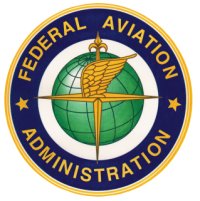FAA Releases Updated UAS Sighting Reports & Doubles “Blanket” Altitude for Many UAS Flights

The Federal Aviation Administration (FAA) today released an updated list of pilot, air traffic controller and citizen reports of possible encounters with unmanned aircraft systems (UAS). The latest report covers August 22, 2015 through January 31, 2016.
Reports of unmanned aircraft have increased dramatically since 2014. Safely integrating unmanned aircraft into the national airspace system is one of the FAA's top priorities, and the agency wants to send a clear message that operating drones around airplanes and helicopters is dangerous and illegal.
"We have a number of educational initiatives with our government and industry partners to teach drone operators how to fly safely, including the drone registry we launched last December," said FAA Administrator Michael Huerta. “But enforcement goes hand-in-hand with education, and we will take action against anyone who operates irresponsibly to the full extent of the law.”
The FAA wants operators to know where it's legal to fly their drone. More than 406,000 people have registered since the registry went live in late December.
For current information on where unmanned aircraft can be flown safely, the FAA offers the B4UFLY app that is available for iOS and Android smartphones. The app is free and can be downloaded from iTunes and Google Play. Unauthorized operators may be subject to stiff fines and criminal charges, including possible jail time.
View additional information, including the latest and previous UAS sighting reports.
FAA Doubles “Blanket” Altitude for Many UAS Flights
After a comprehensive risk analysis, the Federal Aviation Administration (FAA) has raised the unmanned aircraft (UAS) “blanket” altitude authorization for Section 333 exemption holders and government aircraft operators to 400 feet. Previously, the agency had put in place a nationwide Certificate of Waiver or Authorization (COA) for such flights up to 200 feet.
The new COA policy allows small unmanned aircraft -- operated as other than model aircraft (i.e. commercial use) -- to fly up to 400 feet anywhere in the country except restricted airspace and other areas, such as major cities, where the agency prohibits UAS operations.
“This is another milestone in our effort to change the traditional speed of government,” said FAA Administrator Michael Huerta. “Expanding the authorized airspace for these operations means government and industry can carry out unmanned aircraft missions more quickly and with less red tape.”
The FAA expects the move will reduce the workload for COA applications for industry UAS operators, government agencies and the FAA's Air Traffic Organization. The agency also estimates the move will lessen the need for individual COAs by 30 to 40 percent. Other provisions of an FAA authorization, such as registering the UAS and making sure pilots have the proper certification, still apply.
Under the blanket COA, the FAA will permit flights at or below 400 feet for UAS operators with a Section 333 exemption for aircraft weighing less than 55 pounds and for government UAS operations. Operators must fly under daytime Visual Flight Rules, keep the UAS within visual line of sight of the pilot and stay certain distances away from airports or heliports:
- Five nautical miles (NM) from an airport having an operational control tower; or
- Three NM from an airport with a published instrument flight procedure, but not an operational tower; or
- Two NM from an airport without a published instrument flight procedure or an operational tower; or
- Two NM from a heliport with a published instrument flight procedure.

.jpg)




.png)


Comments
There are no comments yet for this item
Join the discussion